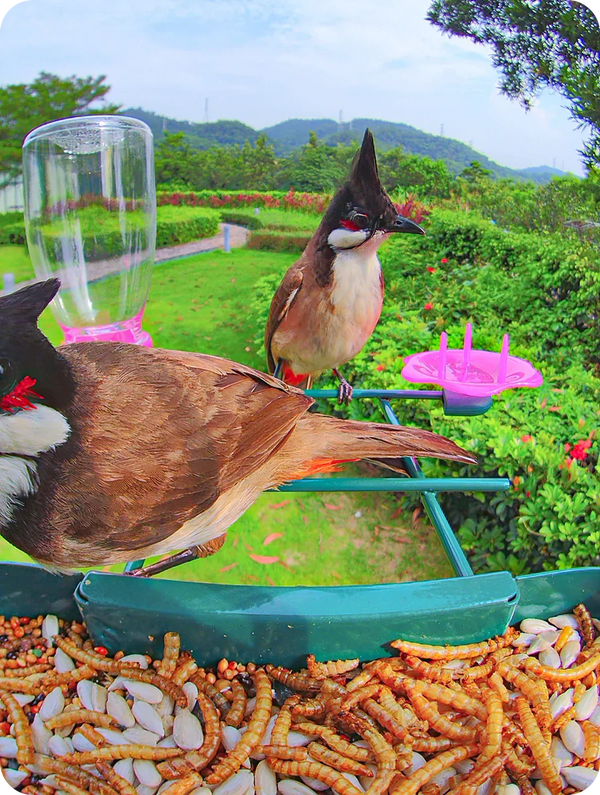The Ultimate Guide to Choosing the Perfect Suet for Your Feathered Friends!
Suet for bird feeders is a fantastic way to attract a variety of feathered friends to your backyard. As the winter months approach, many birds struggle to find enough energy-rich food to sustain them through the cold, making suet a crucial part of their diet. This high-fat food source provides essential nutrients, helping birds maintain their energy levels and overall health. In this guide, we'll explore everything you need to know to choose the best suet for your backyard birds, ensuring you provide them with a reliable food source while enjoying the beauty of nature right outside your window.

Understanding Suet and Its Benefits
Suet is a type of animal fat, specifically from the kidneys and loins of cattle or sheep, that is rendered and used as bird feed. Unlike seeds or nuts, suet provides a concentrated source of energy, making it particularly appealing to birds during the colder months. Birds like woodpeckers, nuthatches, and chickadees are especially fond of suet, thriving on its rich calorie content. The high-fat content in suet helps these birds maintain their body heat and energy levels, proving to be a vital resource when natural food sources are scarce. In addition, suet can also attract insect-eating birds, such as blue jays and wrens, who enjoy the added protein it offers. Understanding these benefits is key to creating a welcoming environment for a diverse range of bird species.
Types of Suet Available
When it comes to suet for bird feeders, there are several types available that cater to different preferences and bird species. Traditional suet cakes are solid blocks of fat that can be easily placed in a suet feeder. On the other hand, suet balls are a more portable option, often made with added seeds and fruits, providing extra nutrition and variety. Suet plugs, which are cylindrical in shape, can be inserted directly into specially designed feeders, offering an alternative feeding method. The ingredients in these products can vary widely, from pure animal fat to blends that include seeds, insects, or even fruit. Higher-quality suet typically contains more nutritious ingredients, while lower-quality options may include fillers that do not provide the same level of attraction for birds. Choosing the right type of suet can significantly impact the variety of birds that visit your feeder.
Factors to Consider When Choosing Suet
Selecting the right suet for your bird feeders involves several important factors. First, consider the quality of the ingredients; look for suet that lists high-quality animal fats along with nutritious additives like seeds and fruits. The fat content is also crucial; suet with higher fat content will provide more energy, making it a better choice for winter feeding. Additionally, different bird species have varying dietary preferences, so it’s essential to research which types of suet attract the birds you want to see in your yard. Reading labels can help you identify high-quality products; avoid those with artificial preservatives or fillers. By focusing on these key factors, you can ensure that you're not only attracting birds but also providing them with the nutrition they need.
Price Comparisons and Budgeting for Suet
When budgeting for suet, it’s helpful to understand the general pricing trends. Suet can vary in price based on its quality and the ingredients used. While you might find cheaper options, it's essential to balance cost with quality. Buying in bulk can be a great way to save money; many retailers offer discounts for larger quantities. Additionally, consider purchasing seasonal supplies to take advantage of lower prices during peak buying times. It’s also worth keeping an eye out for sales or promotions, which can help you stock up on your favorite suet without breaking the bank. Ultimately, investing in quality suet will pay off in the number of birds it attracts to your feeder.
Feeding Tips and Best Practices
To maximize the effectiveness of your suet feeders, consider several practical tips. First, placement is critical; hang your feeder in a sheltered area where birds can feel safe from predators. Using a sturdy suet feeder that allows for easy access while keeping the suet dry is also important. Regular maintenance is key; ensure you clean your feeders frequently to prevent mold and bacteria growth. Replacing the suet every few days, especially during high usage, will keep the birds coming back for more. Observing the feeding behavior of the birds can also provide insights into their preferences, allowing you to adjust your suet offerings accordingly. With these best practices, you’ll create a welcoming environment for your feathered friends.
Summarizing Your Suet Selection Journey
In summary, choosing the right suet for your bird feeders is essential for attracting and supporting a diverse range of birds in your backyard. By understanding the benefits of suet, the various types available, and the factors to consider when making your selection, you can provide a nutritious food source for your feathered friends. Additionally, budgeting wisely and implementing best feeding practices will enhance your birdwatching experience. So, go ahead and experiment with different suet options, and take joy in the vibrant avian life that visits your feeders. Supporting local wildlife through proper bird feeding practices not only enriches your garden but also contributes to the health of the birds in your area.






commentaires